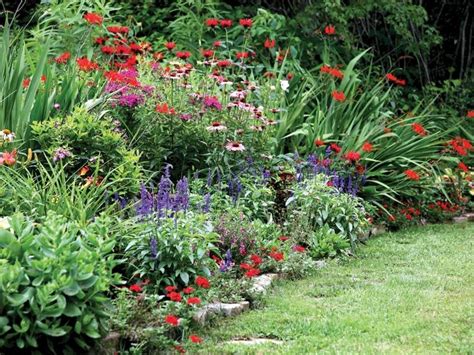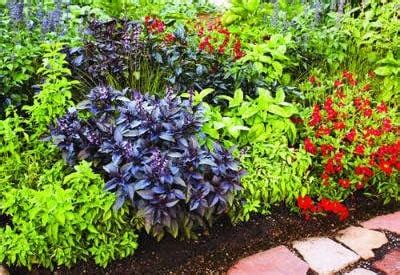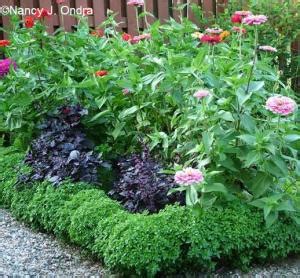Starting a vegetable garden can be a rewarding journey, offering fresh produce and a beautiful outdoor space. However, achieving a thriving garden requires thoughtful planning and preparation. In this ultimate vegetable garden planning guide, we’ll explore essential tips and tricks to help you create a productive and sustainable garden. From choosing the ideal location and selecting vegetables suited to your climate, to soil preparation and effective watering methods, this guide covers all the crucial aspects. We’ll also delve into natural pest control, companion planting, and seasonal maintenance to ensure your garden remains healthy and abundant year after year.
shzow.com offers a detailed exploration of this topic.
1. Choosing the Right Location for Your Vegetable Garden
A successful vegetable garden begins with a well-chosen location. Sunlight is paramount, with most vegetables requiring 6 to 8 hours of direct sun each day. Carefully assess your yard throughout the day, noting areas bathed in the most sunlight. Avoid spots shaded by trees, structures, or fences.
Next, think about proximity to a water source. Vegetables need regular moisture, so being near water simplifies irrigation. Make sure the area drains well, as standing water can damage roots and cause problems. Avoid low spots where water might pool after rain.
Soil quality is crucial for your garden’s success. Aim for soil rich in organic matter and with good drainage. A soil test will reveal pH levels and nutrient content, allowing you to amend the soil with compost or organic matter if needed. Avoid locations with poor soil or where plants have previously struggled.
Finally, consider convenience. Select a spot that’s easily accessible for routine tasks like weeding, watering, and harvesting. Being close to your home is also advantageous, allowing you to easily observe and appreciate your garden’s growth. Choosing the right location sets the stage for a thriving and fruitful vegetable garden.

2. Selecting the Best Vegetables for Your Climate
A flourishing garden hinges on choosing the right vegetables for your climate. Begin by identifying your local climate zone, as this dictates which plants will thrive in your area. Research vegetables that are well-suited to your region’s specific temperature, humidity, and rainfall patterns. For cooler climates, consider crops such as lettuce, kale, and root vegetables, which are known for their frost tolerance. In warmer regions, tomatoes, peppers, and cucumbers excel in the heat.
When selecting plants, carefully consider the length of your growing season. Opt for varieties that will reach maturity within the timeframe available to you. Furthermore, be mindful of microclimates within your garden. Areas with varying levels of sunlight or wind exposure can significantly impact plant growth.
Choosing vegetables suited to your climate enhances your likelihood of a bountiful harvest and lessens the necessity for intensive maintenance or supplemental resources. This deliberate strategy guarantees a thriving and pleasurable gardening experience throughout the growing period.

3. Soil Preparation and Improvement Techniques
A thriving vegetable garden begins with proper soil preparation. The first step is to test your soil’s pH and nutrient levels. Most vegetables prefer a soil pH between 6.0 and 7.0. If your soil is too acidic, add lime to raise the pH. Conversely, if it’s too alkaline, sulfur can be used to lower it.
Next, enhance soil fertility by incorporating organic matter. Adding compost, well-rotted manure, or other organic materials enriches the soil and improves its structure. This will promote better water retention and drainage, creating an ideal environment for root growth.
To promote healthy root growth and aeration, loosen the soil to a depth of at least 12 inches. Use a garden fork or tiller to break up compacted soil, removing any large clumps or rocks.
To help your soil retain moisture, suppress weeds, and regulate temperature, consider adding mulch to the surface. Organic mulches, such as straw or shredded leaves, offer an added benefit: they decompose over time, enriching the soil even further.
Keep a close eye on your soil’s health all season long, adding compost or other amendments as required. By properly preparing and improving your soil, you lay the groundwork for robust, thriving vegetable plants and a generous harvest.

4. Planning Your Garden Layout for Maximum Yield
A well-planned garden layout is crucial for maximizing your yield and making the most of your space. Begin by creating a garden plan that includes all the vegetables you want to grow, considering their spacing needs and how they grow. Grouping plants with similar requirements together will simplify their care and watering routine.
To maximize space and ease of access, consider utilizing raised beds or garden rows. For optimal sunlight exposure, position tall plants, such as tomatoes, on the northern side of the garden, preventing them from casting shade on shorter plants.
To promote healthy growth, use companion planting techniques. This involves pairing vegetables that benefit each other, like basil and tomatoes, where the basil repels pests that might harm the tomato plants. Additionally, rotate your crops each season to prevent the depletion of soil nutrients and reduce the chances of plant diseases.
By using trellises or stakes to support climbing plants, such as beans and cucumbers, you can make the most of your vertical space. This technique increases the usable area of your garden and enhances air circulation around plants, promoting a healthier and more productive growing environment.
5. Efficient Watering and Irrigation Methods
For a flourishing vegetable garden, efficient watering and irrigation are paramount. Begin by creating a regular watering schedule, ideally in the early morning hours. This minimizes evaporation and allows plants to absorb sufficient moisture throughout the day.
Drip irrigation systems are highly effective, delivering water directly to plant roots while minimizing waste and reducing the risk of disease. Soaker hoses offer another method of irrigation, providing even moisture to garden beds with minimal runoff.
To retain soil moisture, reduce evaporation, and suppress weeds, incorporate mulch around your plants. By watering deeply and less frequently, you encourage deep root growth and improve drought resistance.
Keep a close eye on your soil’s moisture levels. You can do this with a soil moisture meter or by simply feeling the soil with your hand. Make sure to adapt your watering schedule based on the weather, the specific needs of your plants, and the moisture levels in the soil. By watering efficiently, you can keep your garden flourishing and productive while making the most of our precious water resources.
By carefully selecting your garden location, choosing climate-appropriate vegetables, preparing your soil, planning an efficient layout, and employing effective watering and pest control methods, you set the stage for a successful and bountiful vegetable garden. These practices not only enhance plant growth and yield but also foster a more sustainable and enjoyable gardening experience. With thoughtful planning and ongoing care, your vegetable garden can thrive and provide a rewarding harvest throughout the growing season.
shzow.com
